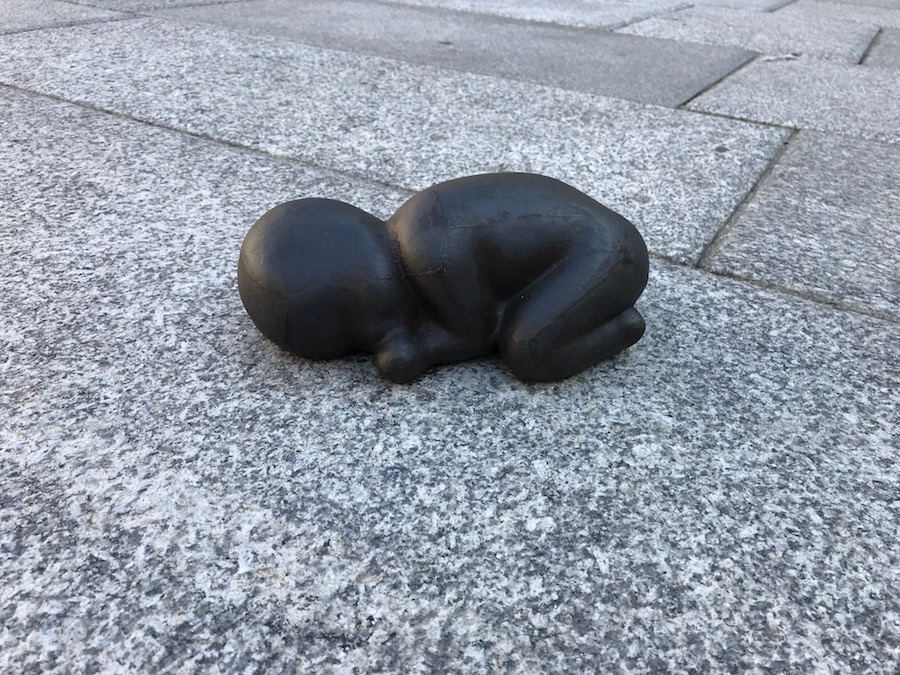
“Iron Baby”, 1999.
Image courtesy of: ArtLyst
The British artist Antony Gormley recently staged a solo show at London’s Royal Academy of Arts. The impressive show fills all thirteen rooms of the Royal Academy’s Main Galleries and covers his work from the 1970’s to present day.
There is a room filled entirely with sketchbooks and drawings, and early works. Interestingly, the show actually begins outside with a sculpture of a tiny, sleeping baby symbolizing utter vulnerability. The contrast is evident, an iron baby is still just a baby… innocent and dependent and requiring nurture.
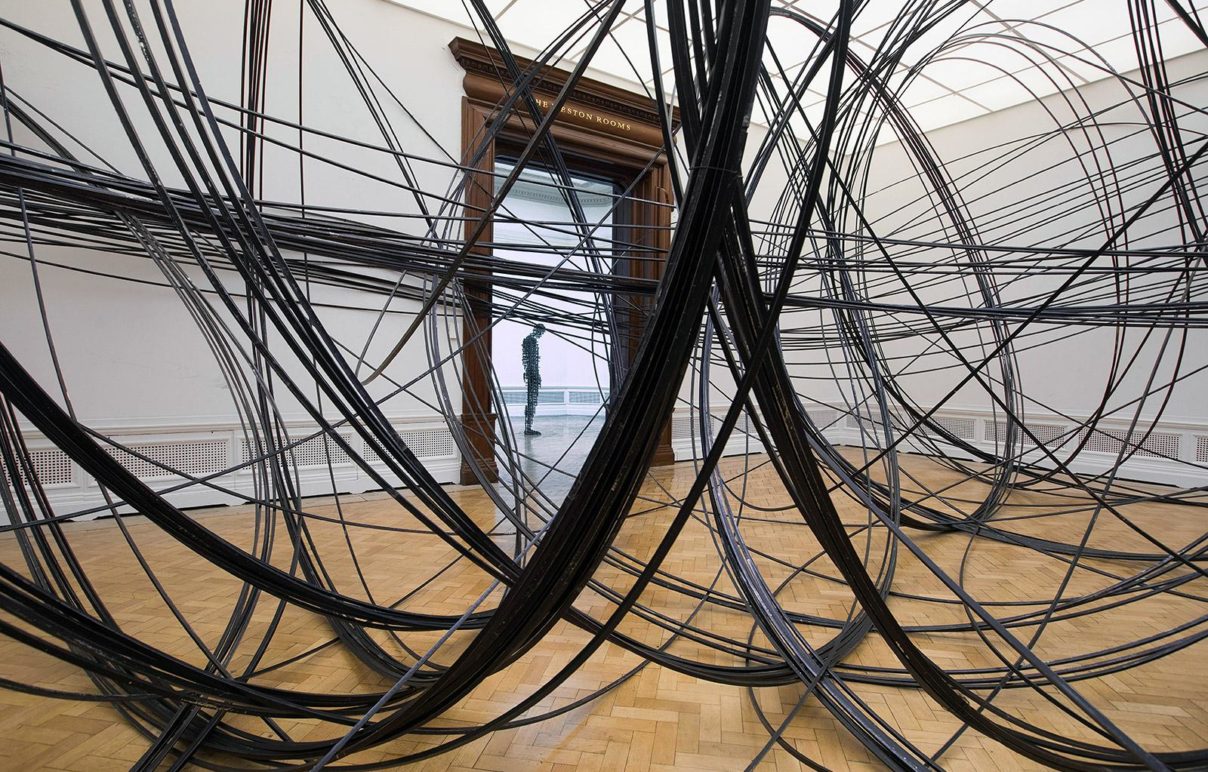
“Clearing VII”, 2019.
Image courtesy of: Wallpaper, photographed by: David Parry
The show focuses on the importance of space and perception… not in the theoretical sense, but actual physical space. Visitors are forced to navigate through sculptures that are very specifically placed on the ground.
Most impressive, in our opinion, is “Clearing VII”. Eight kilometers of black aluminum tubing set in coils loops around the entire gallery room. The only interruptions are the floors, side walls, and the ceiling. As you might imagine, a huge, dark 3-D scribble is what you encounter. In order to exit the room, you must go through the sculpture… when you do so, you “complete” the work.
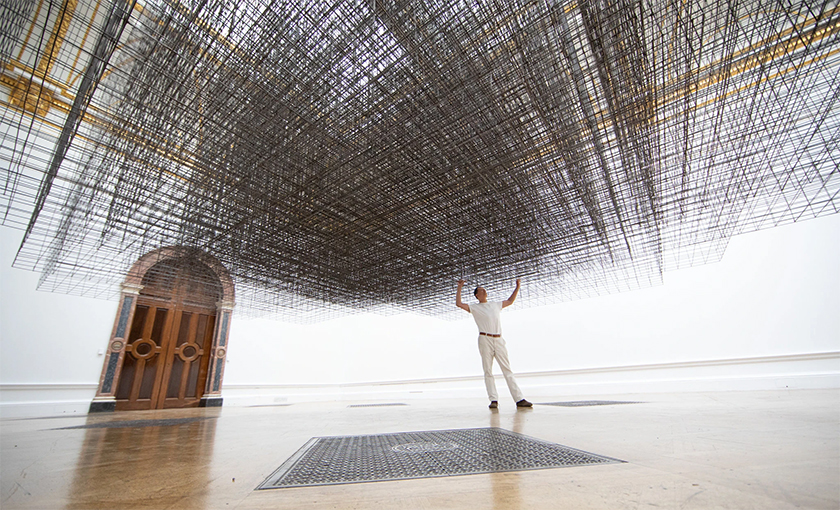
Gormley and his installation, “The Matrix III.”
Image courtesy of: The New York Times, photographed by: Suzanne Plunkett
Work needed to be done in order to reinforce the historic galleries’ floors and walls due to Gormley’s large-scale sculptures and installations. The pieces on display are meant to test the scale and light of the Royal Academy of Arts’ architecture.
Martin Caiger-Smith, the show’s curator and author of a Gormley monograph, said “Antony’s project has physically pushed this building to its limits: It’s literally going through walls, and is suspended from the ceilings. Just in terms of weight and pressure, and flooding an entire gallery with earth and water: These are things that even a contemporary building might slightly have difficulty with.”
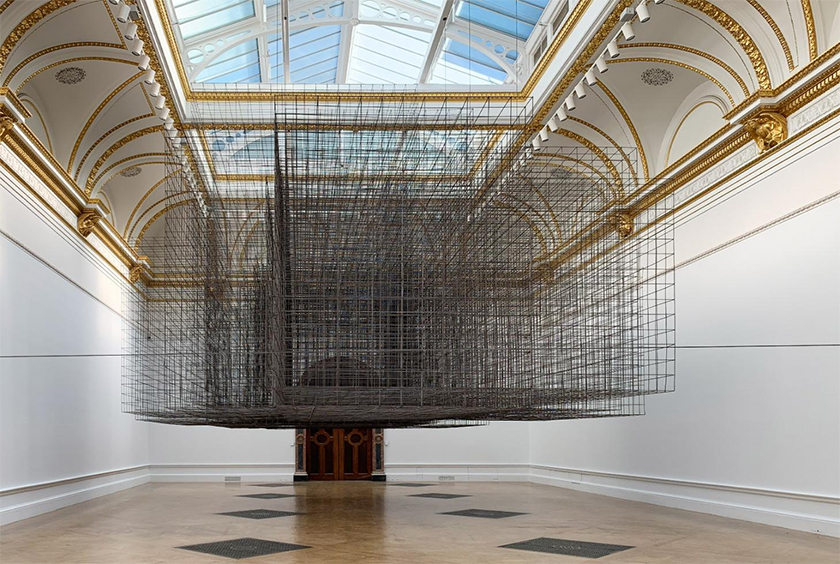
“Matrix III”, 2019.
The suspended room-size cage made from 98% recycled industrial steel forms a vast cloud of steel mesh and fills the largest museum room.
Image courtesy of: Wallpaper, photographed by: Jessica Klingelfuss
The show at the Royal Academy of Arts features 142 pieces, of them 36 are sculptures… from the tiny to the huge. This is only Gormley’s second solo exhibition and the first one in twelve years. We appreciate how this show spans the artist’s entire career.
Himself a student of Buddhist meditation, the 70-year-old Gormley wants you to take time and experience everything. Even despite the crowds that have attended the show, there is a calming atmosphere that encompasses each installation. Part of that is thanks to Gormley who was involved in all aspects of the three-year long curation process. Thanks Royal Academy of Arts, we are so glad that Gormley was able to put the existing architecture to such great use!
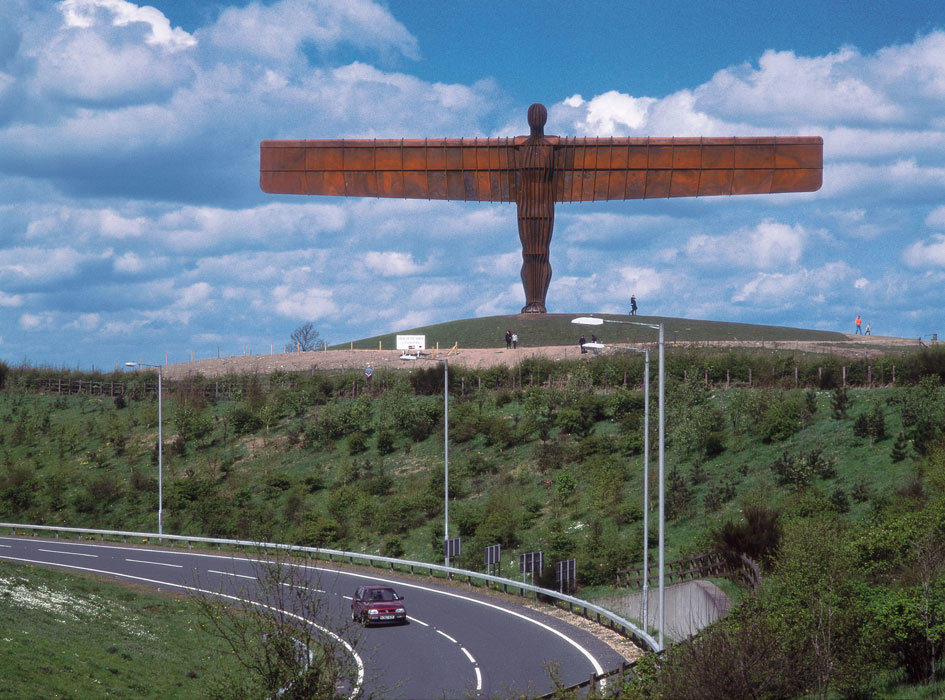
“Angel of the North”, 1998.
Image courtesy of: The New York Times, photographed by: Colin Cuthbert
The British artist, perhaps better known internationally than within his own country (due to his popularity at fairs and auctions) has also made monumental outdoor sculptures. Perhaps his most famous is “Angel of the North”. This 65-foot steel figure with outstretched wings was made for Gateshead, a former mining and shipping town. The reason for this piece was a response to then Prime Minister Margaret Thatcher’s claim that “everything that had come out of the Industrial Revolution as being over.”
Gormley is a believer that works are “proof that art doesn’t just have to belong in collections, in galleries, in institutional contexts: that it can be out there for everybody, and that it can be a focus for life.”